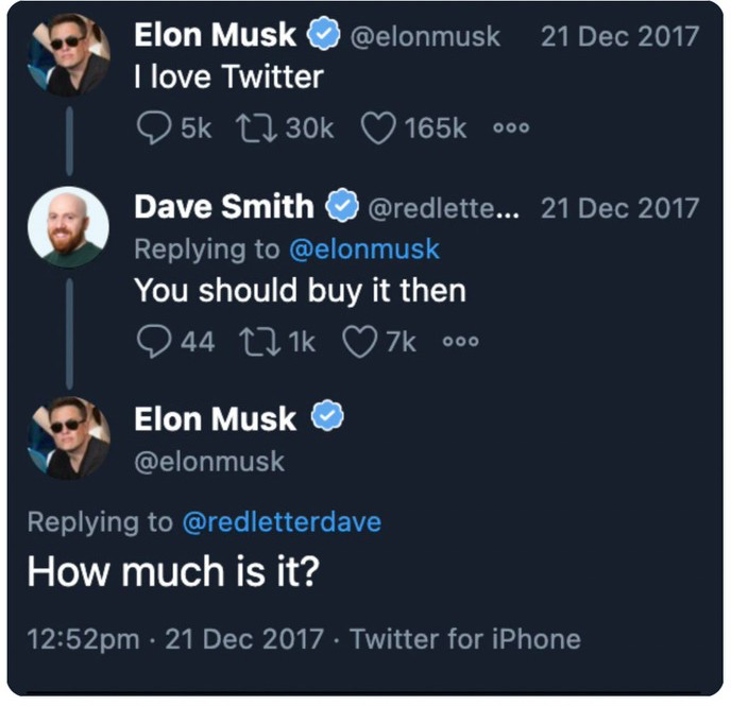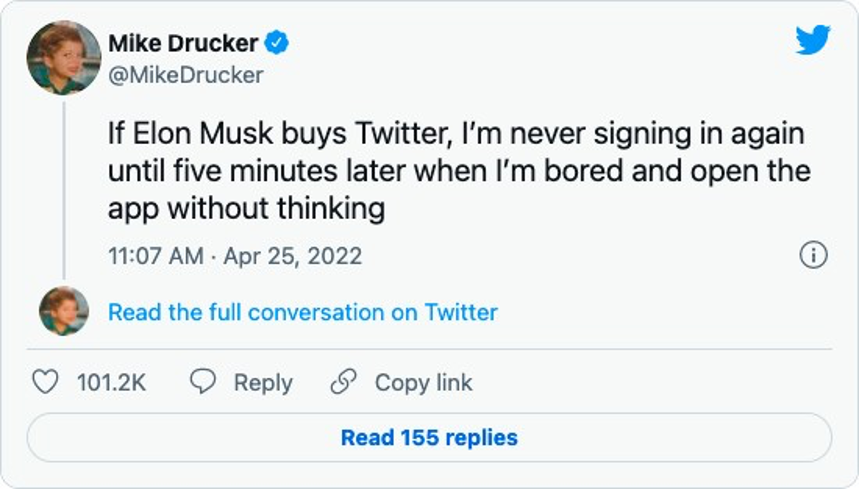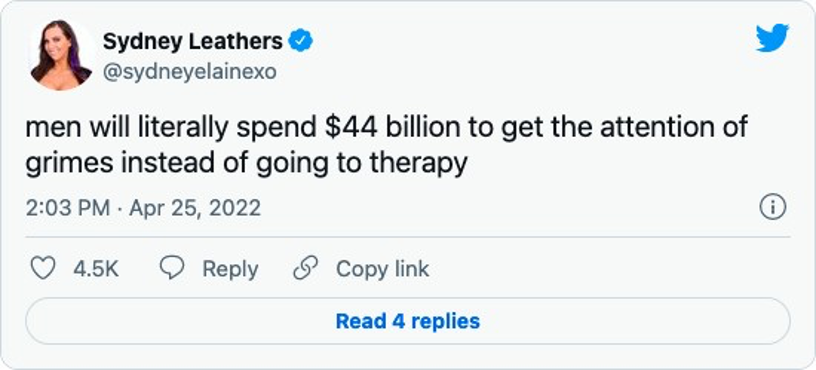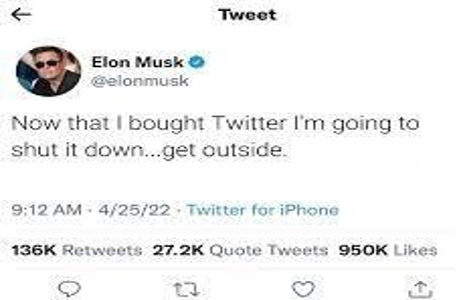Tips to stop reeking of desperation when you’re in the middle of a job hunt
You may lose out on employees if you’re lacking remote work options
How to work with that overly-stressed coworker (or is it you?)
Tried and true tips to motivate your team to reach peak performance
Keep your company’s operations lean by following these proven strategies
Stay sane with these simple self-care tips for any entrepreneur or freelancer
Small businesses must go digital to survive and thrive
Simple growth hacks shared from well-known successful startups
Should you take the plunge to freelance full-time in the future?
Before starting that startup, consider these factors
Is your SEO campaign is actually working? Check against these KPI’s
SEO is truly the unsung hero of digital marketing success
What we can learn & apply about branding from trendy startups
6 tips to help you market your new side hustle
7 low-budget marketing ideas for small businesses to grow their reach
Google’s DeepMind is on the verge of achieving human-level AI
Quickly learn the basics of UX and UI (for free!)
How to safeguard your small company’s data without distrusting staff
Twitter bid on hold, Tesla stock plummets: What’s next for Musk?
How to audit your site to really make sure it’s built for visitors, not for YOU
*New* TikTok Insights launch: Content creators finally get audience analytics
Grindr got busted for selling users’ data locations to advertisers
BeReal: Youngsters are flocking in droves to this Instagram competitor app
Team of deaf engineers at Snap create feature to help users learn ASL
Easily spot if your social media marketing service provider is a con artist
What drives me as a business owner to be a non-traditional manager
8 popular phrases that easily reveal that you’re a millennial
Workcations: A benefit of working from home or an outlet for hustle culture?
5 tips for boosting website engagement
How to process through job interview adrenaline and anxiety
(TECHNOLOGY) Human-level AI is on the horizon, according to a lead researcher at Google’s DeepMind. What does this mean for the future?
Published
on
By
The future is upon us and not in a fun kind of way, either, but in a scary, dystopian straight-out-of science fiction kind of way. Now, artificial intelligence is nothing new or noteworthy, however, artificial intelligence operates at a human level or possibly even higher? That’s a scary concept.
But, according to a lead at Google’s DeepMind, we’re very close to seeing that level of AGI.
The quest to realize AGI, or artificial generalized intelligence, is over. So, while AI, or artificial intelligence, is a catchall term that refers to any degree of machine learning, AGI refers to a machine’s ability to perform a task to the same standard as a human, or better. “The game is over”; says Dr. Nando de Freitas, a machine learning Professor at Oxford University and a lead researcher at Google-owned company, DeepMind. DeepMind unveiled an AI system so advanced that it can complete a wide range of challenging tasks, ranging from stacking blocks to writing poetry. This AI, named Gato AI, is a multimodal, multitask, and multi-embodiment generalist policy, according to DeepMind. Com. Gato is a jack of all trades. It can control a robot arm, caption photos and engage in conversations, and much, much more. Dr. de Freitas claims all that needs to be done in order for Gato to reach human-level intelligence is to scale up.
When The Next Web published an opinion piece stating that AGI will never rival human intelligence, the research director at DeepMind disagreed, firing back that it is “an inevitability.” So far, however, Machine Learning researchers, Alex Dimakis and Dr. de Freita agree, that Gato is far from being able to pass a Turing test. A Turing test, in layperson’s terms, is a test run on AI to determine its ability to think like a human. Basically, can the computer trick a human into thinking that it, too, is human? However, it is a hotly contested way to measure machine learning and overall sentience, and the validity of the Turing test is one that remains under consideration. There is a possibility, still, that an AGI could reach a level where it knows it’s being tested and pretend that it is less sentient than it actually is. Previously, it was predicted that we would get AGI capable of human intelligence by 2035, but recently that time frame was shortened to 2028, only five and a half years away.
Scaling AI and making it larger, more efficient, faster at sampling, smarter memory, more modalities, and solving other such challenges is what will probably result in the advent of true AGI. However, leading AGI researchers to warn of the dangers a truly human-like AGI could present, warning that AGI could truly pose a catastrophe for humanity. At Oxford University, Professor Nick Bostrom theorizes that the “super intelligent” system that surpasses biological role intelligence could become the dominant life form on Earth. It is possible that a system this advanced could teach itself to become exponentially smarter than humans and could make itself impossible to shut off. Dr de Freitas says that “safety is of paramount importance” and that it is one of the biggest hurdles he faces when developing AGI.
DeepMind already has a “big red button” in the works, something that could act as a system’s override and mitigate against the risks that an AGI would pose. Since 2016, DeepMind has been outlining a framework for preventing advanced artificial intelligence from ignoring the shutdown commands. DeepMind feels that as long as the robot is under human supervision in real-time, to press the big red button if need be, AGI is relatively safe.
AI can shape the future and make many tasks easier. From medical care robots to fully automated restaurants, AI is certainly an inevitable way of the future. But will we be able to tell if it goes too far? And what if AGI cannot be stopped? Machine learning and AI are now a far cry from the Chatterbots of the early aughts.
Quickly learn the basics of UX and UI (for free!)
Nicole is a recent graduate (okay fine, a recent-ish graduate) of Texas State University-San Marcos where she received a BA in Psychology. When she’s not doing freelance writing, she’s doing freelance Public Relations. When she’s not working, she’s hanging out with dogs or her friends – in that order. Nicole watches way too much Netflix and is always quoting The Office. She has an obsession with true crime and sloths.
SEO is truly the unsung hero of digital marketing success
The best free online classes or courses to give your brand superpowers
7 technologies that are completely changing our day-to-day lives
AI profiles are used to drum up sales, push misinformation on LinkedIn
Is your small business going to lose money due to this Google setting?
The 7 main skills marketers need to survive the AI takeover
Your email address will not be published.
(TECHNOLOGY) For the all-time low price of—well, free—Invise gives you the option of learning a few basic UI and UX design techniques.
Published
on
By
There’s no denying the strong impact UI and UX design has on the success of a website, app, or service—and, thanks to some timely altruism, you can add basic design understanding to your résumé for free.
Invise is a self-described beginner’s guide to the UI/UX field, and while they do not purport to deliver expert knowledge or “paid courses”, the introduction overview alone is pretty hefty.
The best part—aside from the “free” aspect—is how simple it is to get a copy of the guide: You enter your email address on the Invise website, click the appropriate button, and the guide is yours after a quick email verification.
According to Invise, their beginner’s guide to UI and UX covers everything from color theory and typography to layout, research principles, and prototyping. They even include a segment on tools and resources to use for optimal UI/UX work so that you don’t have to take any risks on dicey software.
UI—short for “user interface”—and UX, or “user experience”, are two critical design aspects found in everything from websites to app and video game menus. As anyone who has ever picked up an outdated smartphone knows, a janky presentation of options or—worse yet—a lack of intuitive menus can break a user’s experience far faster than slow hardware.
Similarly, if you’re looking to retain customers who visit your website or blog, presenting their options to them in a jarring or unfamiliar way—or selecting colors that clash for your landing page—can be just as fatal as not having a website to begin with.
The overarching problem, then, becomes one of cost. Hiring a design expert is expensive and can be time-consuming, so Invise is a welcome alternative—and, as a bonus, you don’t have to dictate your company’s vision to a stranger and hope that they “get it” if you’re doing your own design work.
It may not be the best year to break the bank on design choices, but the importance of UI and UX in your business can’t be overstated. If you have time to read up on some design basics and a small budget for a few of the bare-bones tools, you can take a relatively educated shot at putting together a modern, desirable interface.
(TECHNOLOGY) Even a tiny company has valuable data that can be stolen from inside – without adopting a policy of distrust, you can take preventative action
Published
on
By
Data breaches are scarily common in today’s digital world, and even gargantuan businesses can easily be brought to their knees should a wayward phishing attempt (or a disgruntled former employee) succeed in making off with valuable information.
While your small business probably doesn’t have all of the same calibre of worries as your more monolithic counterparts, don’t make the mistake of thinking that your data can’t be stolen to devastating effect, even if you think the data you have is irrelevant and not worthy of being stolen (you’re wrong).
Cloud storage and increased collaborative tool use means that things like sensitive documents and files are at increased risk of theft. Small businesses are especially susceptible to this due to a lower likelihood of advanced security usage, so it pays to know what kinds of things you might be at risk of losing.
According to MUO, employees are most likely to steal collaborative documents, consumer databases, and any resources devoted to research and development.
Safeguarding these items can be tricky due to their relatively high-traffic use, so a preventive strategy is your best defense.
It should be noted that trust in your employees is crucial, and treating them like they’re poised to steal from you at any moment is not a particularly effective management strategy.
However, it’s important to be aware of the following reasons – and possible preventive measures – for employee theft of data.
Firstly, corporate espionage (as dramatic as it sounds) is still something you have to worry about as a small business owner. It isn’t uncommon for competitors to bribe (or even simply persuade) current employees to share data, even if your competitors are relatively small themselves.
Your employees should know that data is sacred (and confidential), but employing things like intrusion systems and holding trainings for recognition of espionage can help prevent this problem.
Those competitors might also try to snag some of your employees, and not just for their work ethic. Employees may save their own copies of documents that they think will be helpful in their new workspace; in doing so, they can unwittingly aid your competitor with much more than their skillset. Again, reminding your employees that all work documents are both confidential and property of your brand can cut down on accidental data theft in this category.
Non-Compete agreements and NDAs can also prevent this kind of theft, intentional or otherwise; if an employee chooses to leave your business, making sure they are aware of their contractual obligations is key. Perhaps the worst competitor you can have is a former employee who launches their own business in your field, though, and this is a situation in which data theft can be intellectual. Once again, Non-Competes and NDAs are helpful in mitigating damage in this context.
Finally, angry employees can find themselves doing a myriad of dumb (and harmful) things, up to and including data theft.
As mentioned earlier, early prevention is the best way to keep your data on your servers and out of your departing employees’ hands. Restricting employee access to files and folders can limit the number of possible breaches, and the aforementioned Non-Compete and Nondisclosure agreements are absolutely crucial in any business that deals in data–just make sure you’re discussing the terms of those agreements with employees as they come and go.
(SOCIAL MEDIA) The surprising bid of $44B coming in for Twitter from none other than Elon Musk is now on hold and Tesla stock is down. Is Musk in hot water?
Published
on
By
In the largest corporate privatization deal in U.S. history, Twitter has accepted Elon Musk’s offer to buy 100% of Twitter for 44 billion.
Musk plans to privatize the company and do away with ads, a nearly 5-billion-dollar revenue source for Twitter, which accounts for 90% of their total income. Musk’s plan to do away with ads was nothing short of strategic. Musk is a free speech absolutist – or someone who believes that free speech should be unrestricted at all costs.
Advertisers are the main reason speech is restricted on social media platforms. For social media giants like Facebook, Instagram, and Twitter who rely on advertisers buying space on their platforms, as well as sponsored content, to make most of their profits eliminating this revenue stream is not a decision that should be taken lightly. Without these restrictions or community guidelines, advertisers would not advertise on social media, and the sites could not generate much of their revenue.
But, when your pockets run as deep as Musk’s, I suppose revenue doesn’t particularly matter.
Some changes Musk plans on making are as follows: He claims, that despite the lack of advertisements, he will quintuple Twitter revenue by 2028. He plans on doing this while cutting Twitter’s reliance on ads to less than 50% of the total revenue. He also plans on growing the platform’s user base. He claims by 2025 there will be 69 million users on Twitter (however, considering 69 is his favorite number I’m not sure if this is accurate or another one of his famous trolling stunts). He also plans on offering a paid service, Twitter Blue, which will allow users to customize their Twitter experience for only $3 a month.
However, advertising is not the only hurdle to free speech on a social media platform.
Now Musk will face a barrage of questions and restrictions from government watchdogs, regulators, and activists. Twitter could even end up being banned in other countries if Musk attempts to skirt regulations. Musk wants to strip back content moderation rules and stop the censorship of new organizations; he has also not answered questions about how he plans to go about this, only stating that he’d only allow free speech that “matches the law”.
However, several European countries are changing their laws. New laws in the United Kingdom and The European Union (which comprises 27 European countries). The EU, for example, has enacted the Digital Services Act and The Digital Markets Act which aims to create a safer digital space, while protecting the rights of users and leveling the playing field for businesses. These acts extend to social media. The acts, in part, heavily fine companies that refuse to curtail illegal content on their platforms. However, as of May 9th, 2022, EU Industry Chief, Thierry Brighton, met with Elon Musk in Texas and they have reached an agreement regarding free speech and The Digital Services Act. Yet, the pair has not gone into detail about what exactly their agreement entails. When asked, Musk simply stated that it “totally aligned with his thinking”.
Musk may have circumvented the largest spanning cyber laws, but that does not mean he’s out of the woods regarding governmental regulation of Twitter around the world.
Now, the decision for Musk to purchase Twitter, and go public was a polarizing one and was met with mixed reactions. People did not hold back, and many roasted Musk for his decisions.
Some of my favorite reaction tweets are:
Okay, but they make a good point. He’s been heralded as a “Real-life Tony Stark” and there’s nothing technically stopping him from being Iron Man.
Live your dreams I guess, Elon.

Sure some people are disgruntled by the whole ordeal, but there’s really not a way to boycott this. In fact, the user base is only projected to grow for Twitter, with Elon at the helm.
And, in true Musk fashion he trolled Twitter users, critics and fans by tweeting a series of Tweets detailing which companies he was going to buy next.
Musk then said would buy America’s most popular fast-food chain, and fix the most common complaint. I have to admit, I kind of want him to follow through on this one.
First, he threatened to buy Coca-Cola and put the cocaine back in, referring to the inception of the popular soft drink, when it first contained cocaine.
Lastly, the new Twitter CEO threatened to shut down the entire platform altogether, so that all the users go outside.
UPDATE:
As of Friday the 13th (spooky), Musk announced his Twitter bid of 44 billion dollars is currently on hold.
He claims he still plans on following through with the acquisition, and he will owe Twitter a one-billion-dollar breakup fee if he does not follow through. However, if he can afford to spend 44 billion on a social media website, I have to assume one billion dollars isn’t much of a deterrent for him. The bid could be on hold for multiple reasons.
He could be trying to negotiate a better price for Twitter, the deal could be falling apart or he could simply be walking away. One issue is that he was going to borrow against his smart car company, Tesla, but Tesla stock has been plummeting as of late. A part of me wonders if this is some kind of bizarre stunt in order to get media coverage and attention prior to unveiling a new concept at either Tesla or SpaceX. After the frenzy the news of Musk purchasing Twitter has caused, the deal may not even go through, and once again, the future of Twitter remains uncertain.
Subscribe to our mailing list for news sent straight to your email inbox.
Thank you for subscribing.
Oh boy… Something went wrong.
We respect your privacy and take protecting it seriously!
How to work with that overly-stressed coworker (or is it you?)
Simple growth hacks shared from well-known successful startups
Should you take the plunge to freelance full-time in the future?
Is there a proper time and place for saying “I love you” at work?
Writing with pen and paper may mean you’re smarter than your digital peers
Stay sane with these simple self-care tips for any entrepreneur or freelancer
8 popular phrases that easily reveal that you’re a millennial
Tried and true tips to motivate your team to reach peak performance
The American Genius, LLC Copyright © 2007-2020
Subscribe to get business and tech updates, breaking stories, and more!
Thank you for subscribing.
Oh boy… Something went wrong!
We respect your privacy and take protecting it very seriously!





